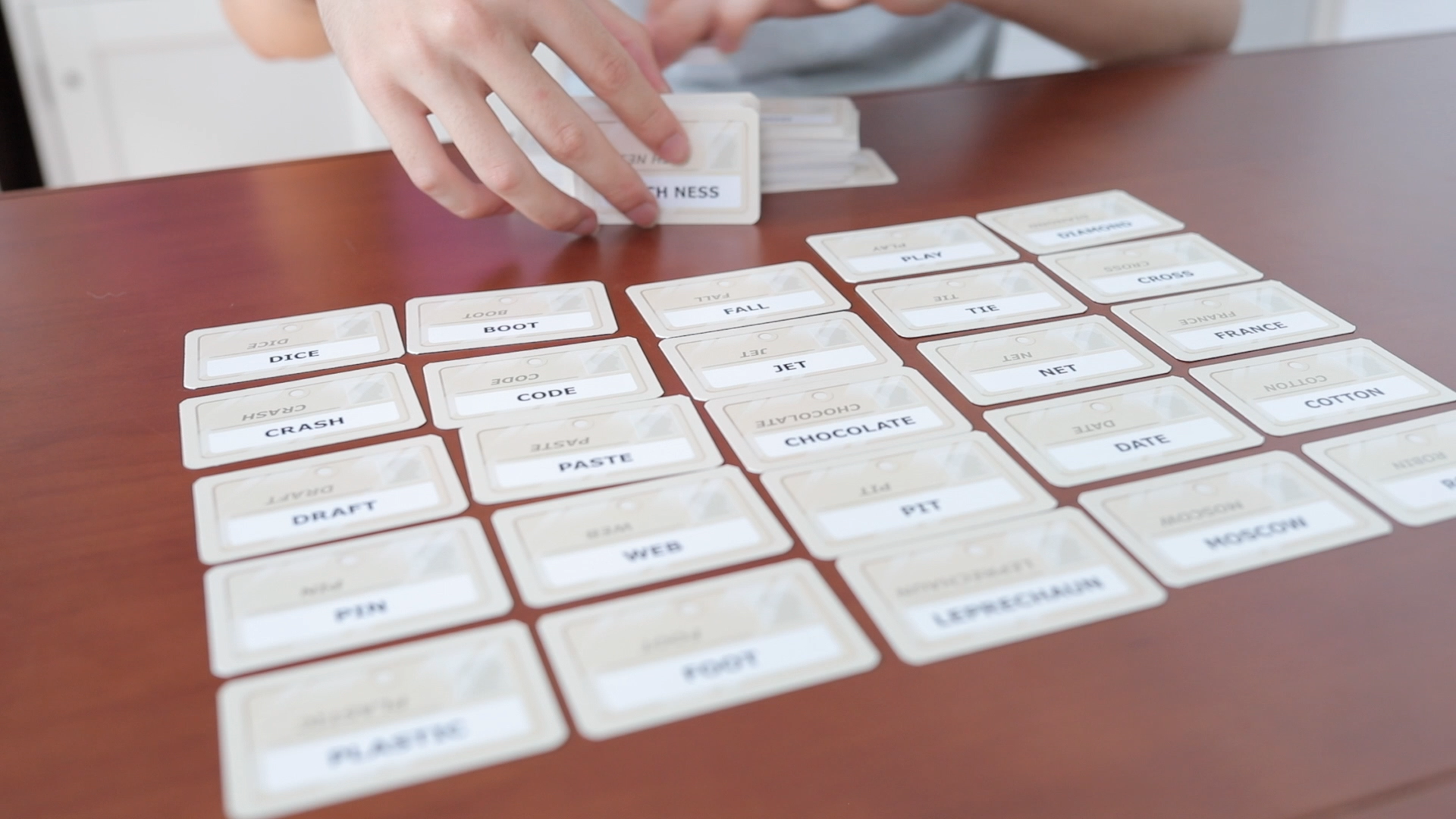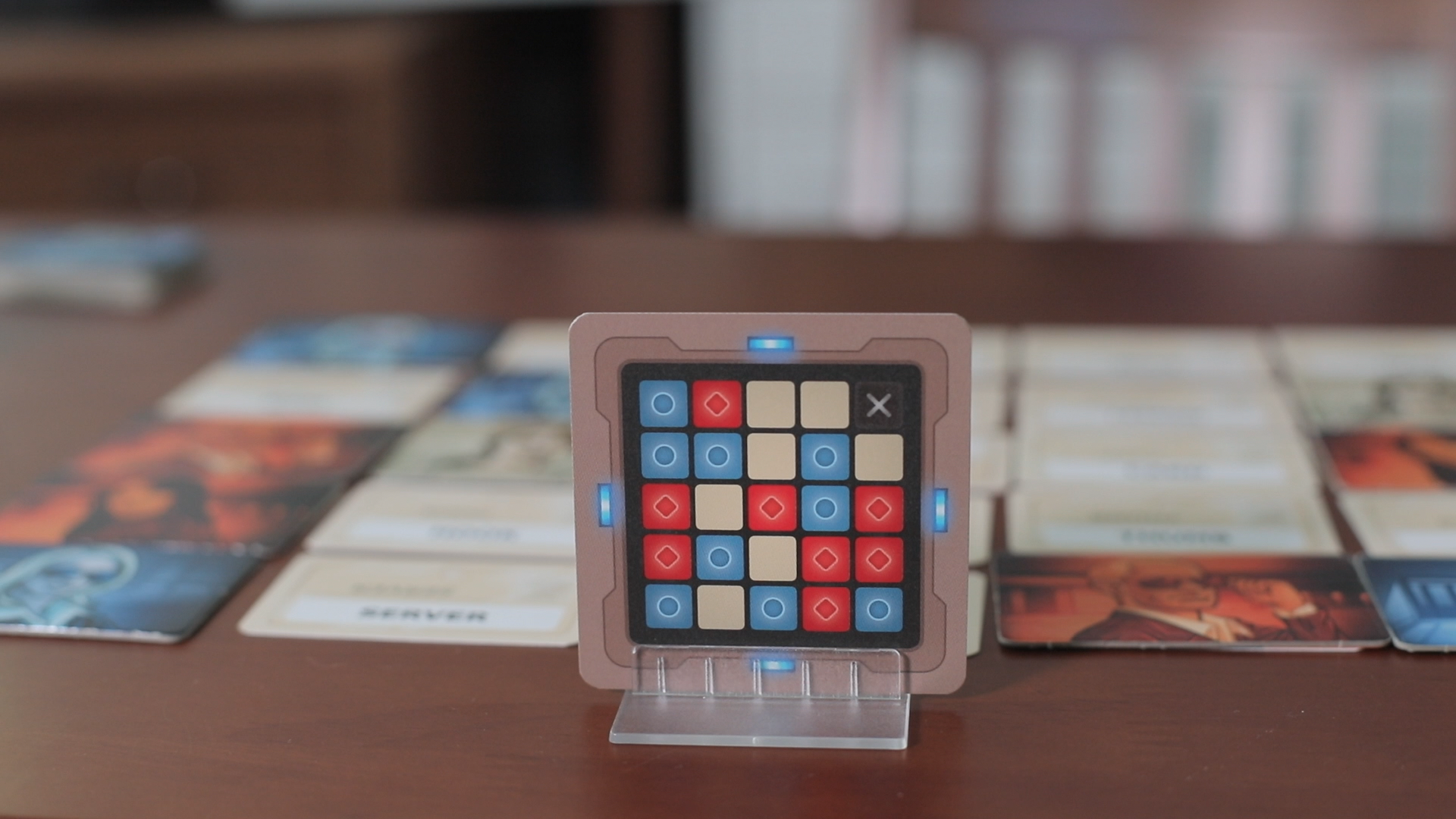Codenames Review
A clever party word game with stifling downtime.
A word association game where 2 teams of spies have to figure out the clues given out by their team’s rotating Spymasters. 2-8 players, at 25-30 minutes (don’t listen to the box’s projected time)
Video published September 10th, 2019

Set up a bunch of cards, and go!

Clear, double-sided word cards for endless replayability.

Have your team guess your colors' cards! Watch out for the Assassin.
Overview & How to Play
You ready for some big brain spy stuff? Codenames has you covered.
This is a game all about secrecy: where as a bunch of sneaky spies, your objective is to guess a certain amount of words correctly from a 5x5 grid of cards on the table.
Only the individual Spymasters of each team know which of these cards actually belong to their team, and they have to get their team to guess using only ONE word clues. That’s right, you can only say a single word as a clue. Then after the word comes a number, that is how many cards on the board this clue represents.
So like, you can say “Orange 3”. Or “Hard 4”, if you’re feeling very bold. Or “Bananas 1” to be very safe.
The team has as many times to guess with the number given with their clue, by touching cards on the board. But, they must immediately pass their turn if they touch something that wasn’t their color. It’s entirely possible they can end up helping the other team by uncovering a card that was their opponent’s. And if the spy guessers ever touch the black card, the assassin, that team immediately loses the game.
If your team isn’t sure about the clue, you can also always pass the turn instead of guessing. Teams take turns passing until a single team guesses all their words on the 5x5, that team wins.
Pros
This core gameplay forces everyone to get really creative with how you’re thinking about words and their relation to each other. Remember, the cluegiver only has a single word to say, so the guessers have all sorts of “wait wait if…” moments as they scour the 5x5 layout. There’s all sorts of connections between words, and then it feels really good when you make a bunch of correct guesses on the same turn. On the flip side, the clue-giver, the Spymaster, gets to experience the big brain moments of coming up with a great clue and having their team precisely guess it within the maze of words.
Codenames also has basically endless replayability, with 200 double sided cards (400 words), and then 40 decoder square cards for the Spymasters, that can be oriented in 4 different ways. Since the cards are double-sided, you can easily start a new game by just turning them over! And the game is dirt cheap!
For a party game, Codenames is especially flexible with player accessibility. Really any player count works, with 4+ being the best. Your games don’t have to end at 8 players either, if you really wanted to, you could make teams as big as you want, since its just guessing anyways. Plus, players can just hop in or leave in the middle of games, as long they’re not the Spymaster, since nothing is tied to individual players.
Oh, and to top it all off, this is so easy to explain for people just hopping in! Just say that you have 2 teams with 2 cluegivers, our cluegiver is going to give us a word and a number, and we as a team just have to touch the ones we think are the best match.
Cons
But let’s go back to the turns, where the cost of having really thoughtful clue giving. This system wants people to ruminate real hard on creative wordplay, which results in a LOT of downtime for players as they wait for others to actually make a decision. Part of what contributes to this is the 25 cards in the middle, which is a lot of cards to keep track of, especially at the start of game.
Spymasters can just kind of blank out and take forever to give a clue, and when they do, they forget about one of the enemy team’s words on the grid that is related to their clue! A way to solve this could be through making the grid smaller, and make the game play in rounds, but that would unfortunately detract from the game’s simplicity. This would also reduce the potential pool of relatable cards to connect clues to.
Oh, but hold on, Codenames comes with a sand timer right!? Well, this is usable, but Codenames is not a game where you want to rush people on their thoughts if you want the clues and guesses to be good. You’re basically forced to slowplay unless you’re a literary genius.
Essentially, Codenames can drag on wayyyy too much for most groups, so the listed 15 minute runtime on the box is not correct, rather the game is about 25-30 minutes. For a lot of those 30 minutes, a lot of it is spent by not playing the game and just waiting. Sure, you could talk about clues you’ve missed or try to avoid picking words related to the enemy’s team, but there’s only so much discussion to be had there.
Oh, and the cards are read to upside down, for the tan side. Not sure why the cards didn’t have one white + black side, then a black + white side. In Codenames, words need to be immediately obvious to read so they can make decisions.
Final Thoughts
This is really a game that is so accessible for many at bats, and when it shines, can make you feel really smart for playing. When you cannot think of a good clue, or feel like you’re missing out on some supposed obvious answer within the maze of 25 cards, you can feel really dumb. Nonetheless, the core gameplay loop is really good, and plenty of a good time is to be had in guessing or providing clues. But then this demanded ‘cleverness’ leads into situations where players sit around and do nothing.














